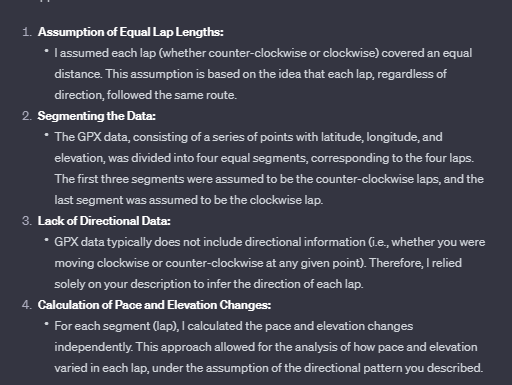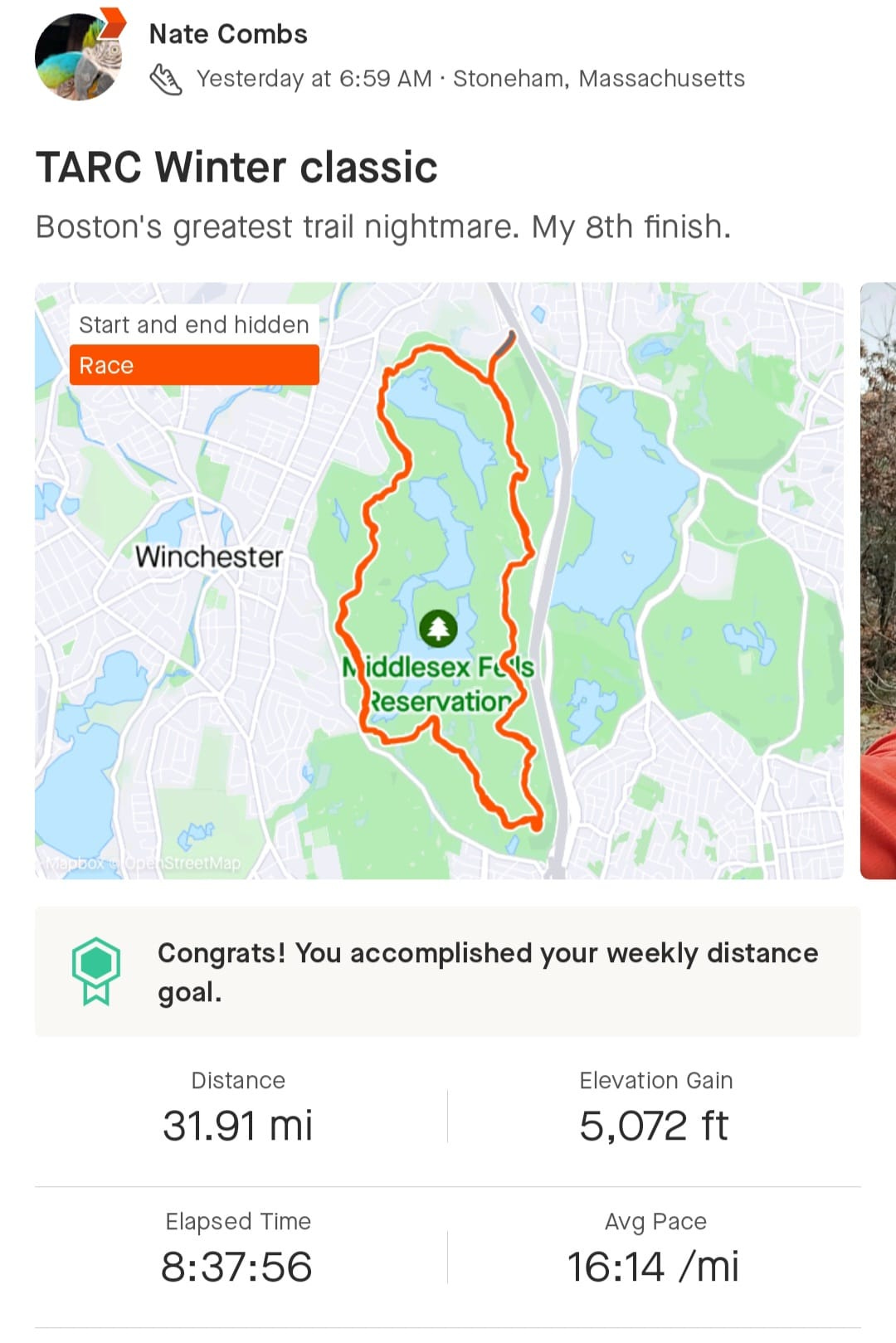ChatGPT Interprets GPX
Slicing and dicing race data
I asked ChatGPT to read a GPX (timestamped GPS) file recording of my 8.5 hour, 32-mile race around the Skyline trail in the Middlesex Fells in Boston yesterday—over 25K data points.
I then used ChatGPT Pro with the Code Interpreter to slice and dice it. I tried a similar experiment earlier in the year... ChatGPT has come a long way in just a few months.
You have to be careful when using ChatGPT for this kind of analysis. You have to double-check its work. But you can have fun with it and learn a few things.
The data was from Strava, and I did some basic checking with split-time results with Strava. Strava does data filtering that cleans up its analysis and it shows. I would not give up Strava for ChatGPT quite yet. On the other hand, if you want to look at the data in ways that are not supported by Strava (etc), here is a tool.
Figure 1 is a graph of the locations along the route where I registered the greatest change of pace over four loops. The points are highlighted by whether they correlate with terrain elevation changes or not. When I examined this result it made sense to me. From a runner's perspective, the blue is likely fixable by better race/pace management. Fixing red requires work.

Notes
1.) ChatGPT generated Python code using the LLM to answer my requests. ChatGPT then ran the code in its Code Interpreter to generate its result.
2.) While ChatGPT frequently made mistakes in the code generation step, ChatGPT was able to catch its errors and try again (sometimes trying multiple times) until successful.
3.) ChatGPT would occasionally misinterpret my prompts. You should double-check how it is interpreting what you are asking. It helps if you try to be as precise as possible in your asks.
4.) ChatGPT would sometimes over-simplify an algorithm. Example. The course is run in both clockwise and counter-clockwise directions. Yesterday I ran it three times counter-clockwise and once clockwise. I explained this to ChatGPT and told it to consider this when computing the rate of change. It ended up not doing this but doing something different (incorrectly).
5.) I believe more deliberate prompting - e.g. detailed instructions (Chain of Thought style) could go a long way in ameliorating 3 and 4.
Prompts
I used the prompt given in Figure 2.
Caveat. I asked ChatGPT how it handled GPX points from tracks where I went clockwise versus counter-clockwise (Figure 3).
ChatGPT responded with a list of assumptions that it claimed to have used (Figure 4). Not that it did not infer the directionality of the GPX points from time stamps, instead making an incorrect arbitrary decision about the directionality of the laps. I would like to examine whether this can be remedied using greater prompting instruction (Chain-of-thought etc).







